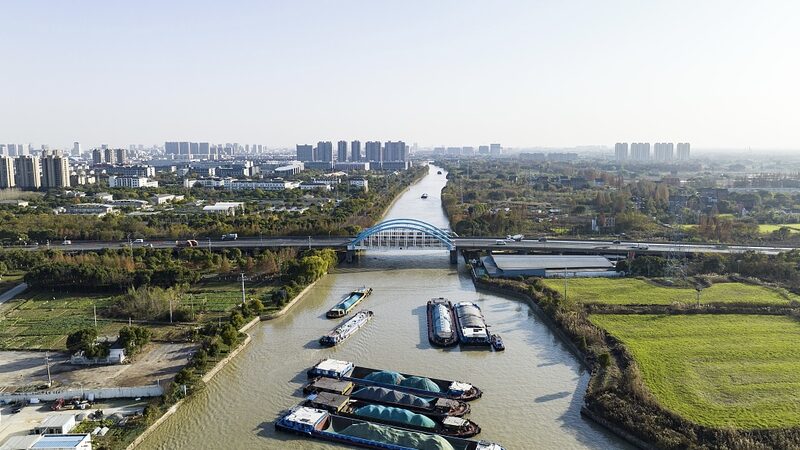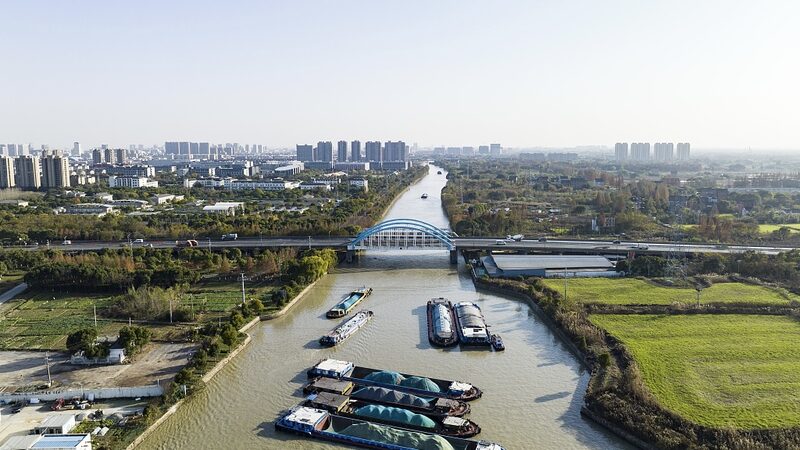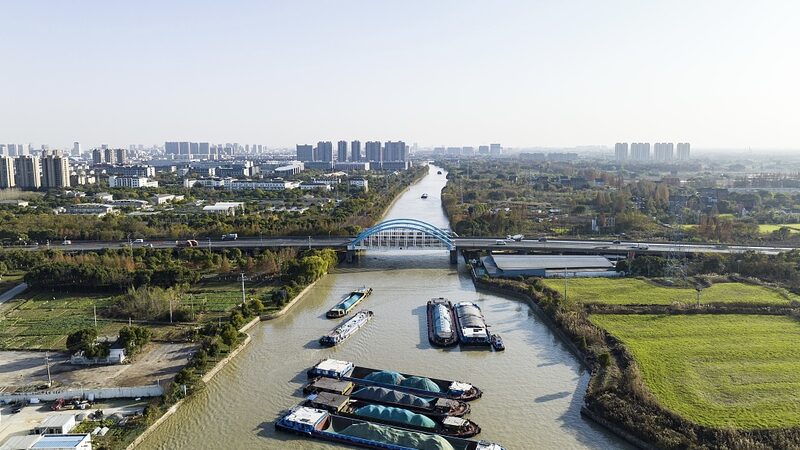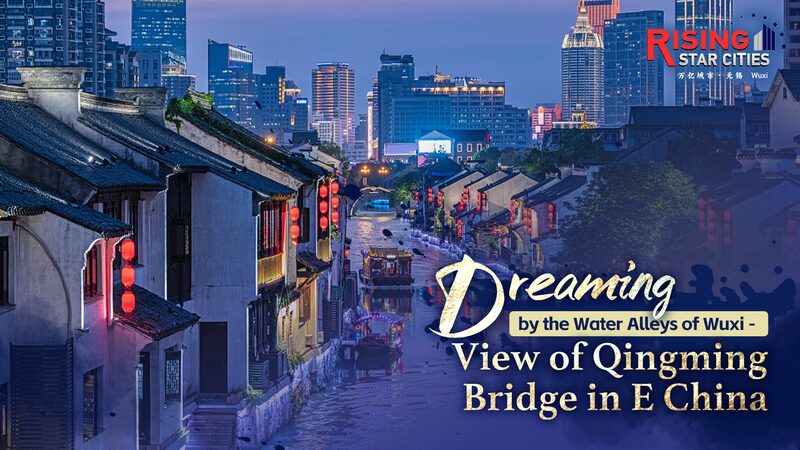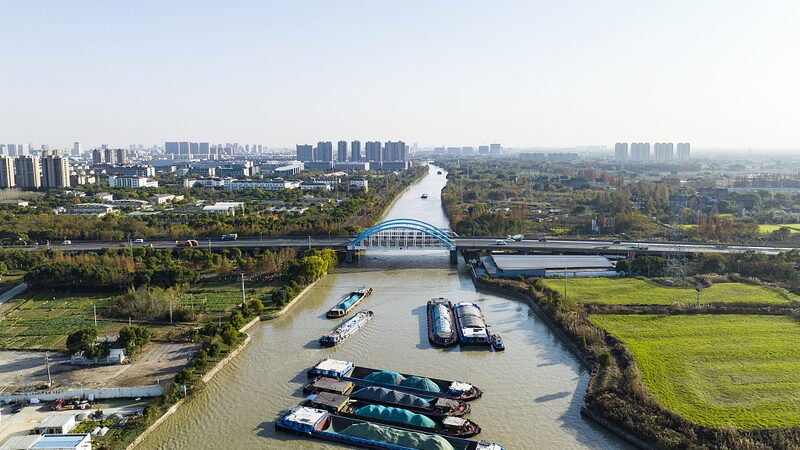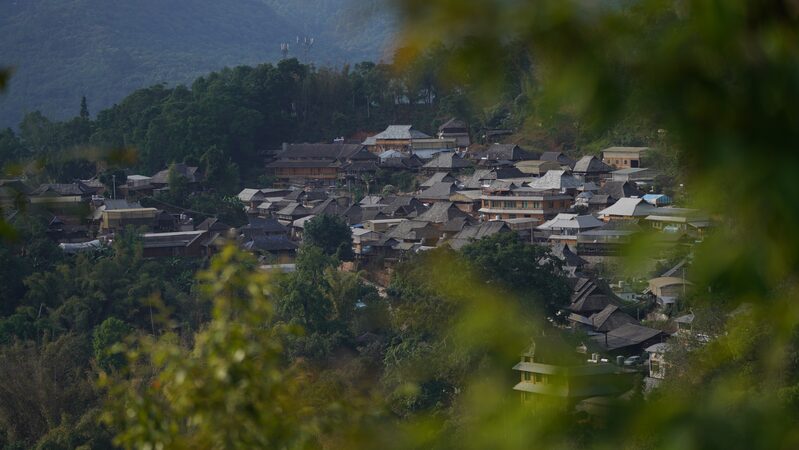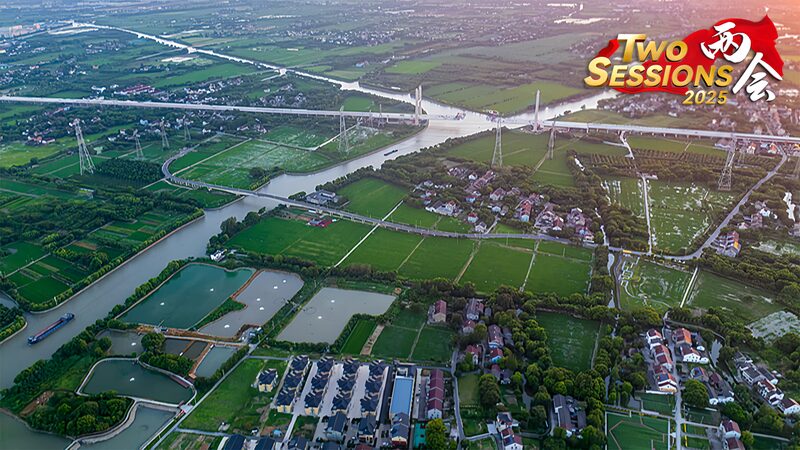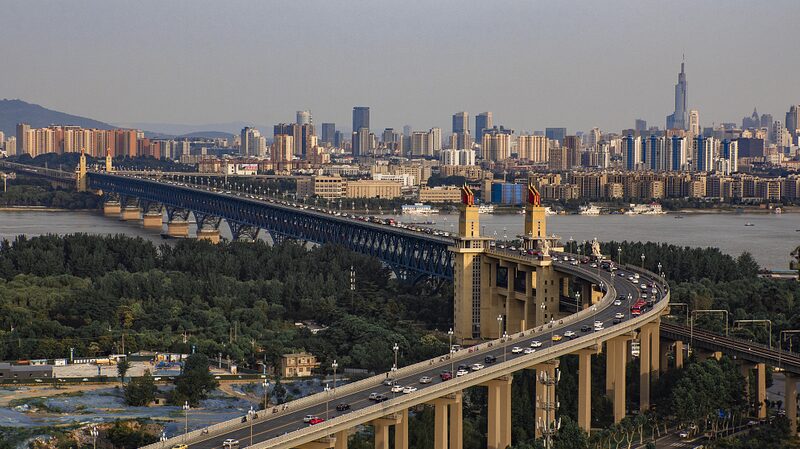The Jinghang Grand Canal, stretching majestically through China’s Zhejiang Province, has been a cornerstone of the nation’s economic and cultural development for centuries. As the world’s longest artificial waterway, it has connected the northern and southern regions of China, facilitating trade, transportation, and cultural exchanges since ancient times.
Designated as a UNESCO World Heritage site, the Grand Canal stands as a testament to China’s ingenuity and engineering prowess. Its waters have witnessed the ebb and flow of dynasties, serving as a vital lifeline that propelled economic growth and social cohesion across the vast landscape.
Today, the canal continues to captivate residents and visitors alike. One of the most striking vantage points is from the Maojiadu Bridge, which towers gracefully over the canal. From this lofty perch, one can gaze into the expansive blue sky and absorb the harmonious panorama of traditional water towns nestled along the canal’s banks. These towns, with their classic architecture and tranquil waterways, offer a glimpse into China’s rich historical tapestry.
The Jinghang Grand Canal not only preserves the legacy of the past but also plays an active role in modern China’s economy. It supports local industries, tourism, and cultural preservation efforts, bridging the gap between history and contemporary development.
For travelers and cultural enthusiasts, a journey along the Grand Canal offers an immersive experience into China’s soulful landscapes and the enduring spirit of its people. Academics and researchers continue to study its impact on urban growth and economic patterns, highlighting its significance in both historical and modern contexts.
The canal’s enduring presence reminds us of the dynamic role infrastructure plays in shaping societies. As a living monument, the Jinghang Grand Canal invites the world to explore its waters and the stories they carry, embodying the harmonious blend of nature, culture, and progress.
Reference(s):
cgtn.com
